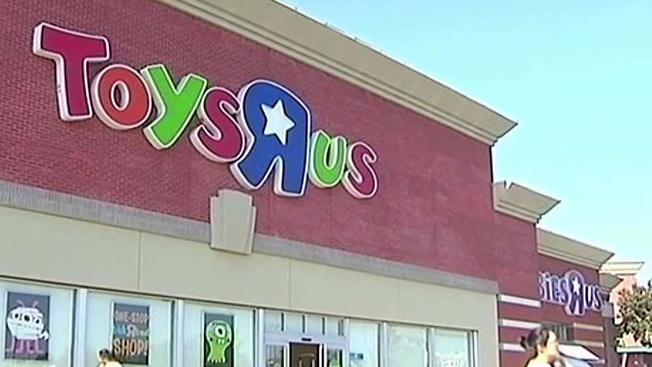
Economic recovery in Tampa will remain choppy through 2010 as housing-market weakness persists and local population growth falls well below levels achieved prior to the onset of the recession. Tampa remains a popular relocation market, but net migration into the city will continue at a below-trend pace until job creation accelerates sufficiently to draw new residents to the metro area. While payrolls have increased year to date, following three years of contraction, growth has been modest and the trend remains inconsistent from one month to the next. Job creation will continue over the remainder of this year, but at 0.6%, the annual rate of employment growth in the metro area for 2010 will fall short of the national figure by approximately 40 basis points. In the wake of the expiration of the homebuyer tax credit, and lacking more substantial population and job gains, the local housing market will remain soft through the second half. This, in turn, will weigh on the broader Tampa economy, delaying the onset of a more robust expansion cycle until 2011.
The economic downturn and slow-starting recovery have taken a toll on commercial real estate fundamentals in the Tampa metro, with vacancy rising significantly across core property sectors over the past few years. With the exception of the apartment sector, which began to post modest improvements earlier this year, fundamentals continue to weaken. The rate of occupancy and rent reductions has slowed dramatically from 2008 and 2009, however, suggesting market stabilization may be approaching. Nonetheless, distress will remain prevalent here until the local economic recovery gains traction and space demand improves significantly. At present, approximately $2.5 billion of commercial real estate in the Tampa metro area is considered distressed, placing it in the middle tier when compared to other markets nationwide.
Local apartment properties posted a 90-basis-point decline in vacancy during the first half of 20 1 0, however, the overall vacancy rate, at 9.8%, remains more than two times greater than levels reported at the last cyclical low point in late 2006. The drastic run-up in vacancy, along with significant rent reductions in recent years, have led to many troubled situations and pushed apartments to the top of the list for distressed dollar volume in the Tampa metro area. In many instances, declining NO Is have made it difficult for owners to cover debt-service obligations, within the CMBS sector, more than 27% of the outstanding multifamily debt has fallen to debt-service coverage ratios of less than LOx. Reduced property values have also created issues for local apartment owners and will result in more distress as debt matures. Approximately 17% of the multifamily CMBS loans in the metro area are reportedly at loan- to-values of more than 100%, and roughly one-quarter of all outstanding multifamily CMBS loans are slated to mature between 2010 and 2012.
Office fundamentals have deteriorated dramatically over the past few years, resulting in a growing number of distressed properties. As of mid- 2010, vacancy had increased to 21.4%, up 10.5 percentage points from three years earlier, the result of a run-up in construction coinciding with a downturn in tenant demand. While office-using employment will grow modestly this year as economic conditions stabilize, the new hires will not make a significant impact on the additional four million square feet of vacant space that has accumulated since the recession started.
With demand likely to remain soft market wide, several more quarters will likely pass before rents start to rise and concessions begin to burn off. Office CMBS delinquency in the metro area reflects weakness in the sector, with approximately 31 % of the debt now 60-plus days past due. More trouble likely lies ahead, particularly for owners who purchased at peak pricing approximately three years ago.
A recovery in retail property fundamentals will not likely start until the middle of 20 11, leaving the market in a period of transition characterized by softening fundamentals for the next several quarters. Rent reductions will remain especially acute for space constructed from 2005 to 2008 and primarily in the former high-growth areas of Hillsborough County, where that space was delivered.
Properties anchored by strong retailers, such as a Publix or Target, will continue to command high rents as leases roll over, but other shopping center owners will need to offer rent reductions and increased concessions to retain and attract tenants. This will result in more distress in the local retail sector over the next several months, which could lead to strong acquisition opportunities for investors with long-term hold or redevelopment strategies.
Hotel occupancy in the Tampa metro area increased during the first half of 20 10, though improvements came at the expense of modest reductions in average daily rates. While rising demand offers a case for optimism, several hotel properties will encounter difficulties, as fundamentals remain weak compared to pre-recession levels.
For example, occupancy year-to-date measures 58.7%, up from 55.9% during the same period in 2009 but still well below the average three years ago of 67.5%. Overall, hotel CMBS delinquency in the metro area has increased to nearly 22%, with properties purchased or refinanced between 2005 and 2007 accounting for nearly all of the past-due loans. While Extended Stay America assets comprise a large share of the distressed hotel dollar volume, there are a few full-service properties on the list. This includes a Crowne Plaza in Hillsborough County, which most recently appraised for approximately 30% of the balance on the mortgage that was originated in 2005.
Since hovering in the low-90% range in mid-2007, Tampa self storage occupancy has slipped considerably, ending the second quarter of2010 at 79.6%. Rents have declined as a result, but losses have been less severe than those recorded in Orlando and smaller markets like Fort Myers, Fort Pierce, Port Lucie and Titusville. Nonetheless, the local self-storage sector has experienced a fair share of distress, and more trouble will emerge over the next year as fundamentals remain soft. The most distress in Tampa can be tied to newer assets built in far-reaching suburbs that have been hit hardest by the housing downturn. Many of these properties struggled to lease up and their owners now find it nearly impossible to obtain permanent financing as construction loans come due. Many at-risk borrowers have been able to work with lenders to extend maturing debt, but more REO activity will take place over the next 12 months as banks become better positioned to accept losses on troubled mortgages. Price discounting on non-stabilized assets will likely be significant, with these properties expected to trade well below construction costs. Fortunately, cash has accumulated on the sidelines for acquisitions, limiting the impact of tight lending on transaction velocity.
GlobeSt.com News Hub is your link to relevant real estate and business stories from other local, regional and national publications.
© 2025 ALM Global, LLC, All Rights Reserved. Request academic re-use from www.copyright.com. All other uses, submit a request to [email protected]. For more information visit Asset & Logo Licensing.







